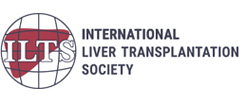Choledocholithiasis
What is Choledocholithiasis?
The gallbladder is a small organ below the liver that stores a fluid called bile, necessary for fat digestion. The bile duct carries bile from the gallbladder to the small intestine. Choledocholithiasis is the presence of gallstones in the bile duct, causing obstruction. Gallstones can occur in the gallbladder and migrate to the bile duct, or they can form in the bile duct itself.
Formation of Gallstones
Gallstones are usually composed of cholesterol or bile pigments. Lesser-known gallstones are made up of cholesterol and calcium salts.
Cholesterol stones or pigment stones may be formed due to:
- Excess secretion of bilirubin (an orange-yellow pigment) or cholesterol
- Low secretion of bile salts
- Presence of an infection
Symptoms of Choledocholithiasis
Symptoms include:
- Nausea and vomiting
- Fever
- Yellowing of the skin and eyes
- Severe abdominal pain
- Loss of appetite
- Clay-colored stools
Risks for Choledocholithiasis
Risk factors include:
- Obesity
- Liver cirrhosis
- Diabetes
- Low-fiber or high-fat diet
- Rapid weight loss diet
- Physically inactivity
- Pregnancy, from increased estrogen production
- Prolonged fasting
- Birth control pills or hormone therapy
- Hereditary disorders like sickle cell anemia
- Being of Native American or Mexican heritage
Diagnosis
Your doctor assesses your symptoms and performs a physical exam. Imaging and blood tests will be conducted.
Imaging tests include:
- Magnetic Resonance Cholangiopancreatography: This is an MRI of the pancreatic duct, bile duct, and gall bladder
- Transabdominal Ultrasound (TUS): Use of ultrasound to view the gallbladder or liver
- Endoscopic Retrograde Cholangiography (ERCP): A procedure to identify gallstones
- Abdominal CT-scan
Blood tests include:
- Liver function tests
- Complete blood count
- Bilirubin test
- Pancreatic enzymes test
Treatment of Choledocholithiasis
The treatment options include the following:
Lithotripsy
Lithotripsy, often referred to as extracorporeal shock wave lithotripsy (ESWL), is the most common procedure for the management of kidney stones or stones in your gallbladder or bile duct. It uses shock waves to break up stones, enabling easy passage of the fragments out of the body with the urine.
- The procedure is performed under general anesthesia and involves the following steps:
- You will lie on a water-filled cushion.
- High-energy sound waves that are created outside of the body travel into the body where they hit and pulverize the stones.
- You may feel a tapping sensation on your skin as the shockwaves enter the body.
- A tube is inserted to help drain urine until all the stone fragments pass.
Endoscopic Retrograde Cholangiopancreatography (ERCP)
This is a procedure that uses an endoscope to assist with removing stones from the bile duct. An endoscope is a long, flexible tube with a camera and light at one end that enables viewing of the internal organs. The procedure involves the following steps:
- An IV line may be used to provide a sedative.
- An endoscope is passed through your mouth into the duodenum (first part of the small intestine)
- A contrast dye is injected into the bile duct for visualization via x-ray.
- Special surgical instruments are guided through the endoscope.
- A small incision is made on the bile duct.
- Bile and pancreatic juices are drained out.
- A balloon or basket-type device may be used to collect the stones.
Surgery
Your doctor may suggest surgical removal of the gallbladder if conservative treatment options fail.
Prevention of Choledocholithiasis
Gallstones can be prevented by:
- Eating a high-fiber diet
- Avoiding the consumption of excess fat
- Consuming lecithin-rich food such as eggs, milk or soybeans
- Exercising regularly





